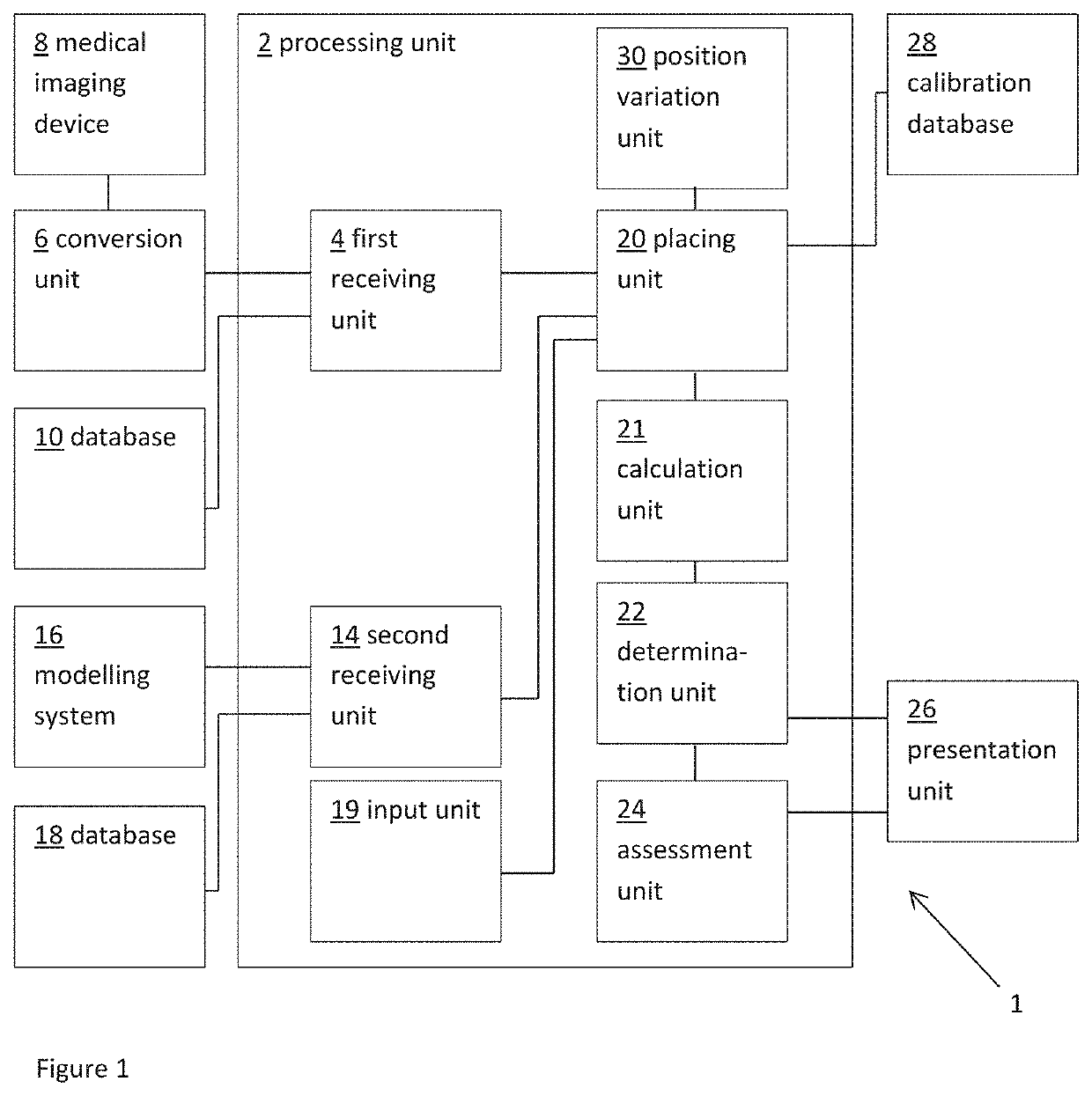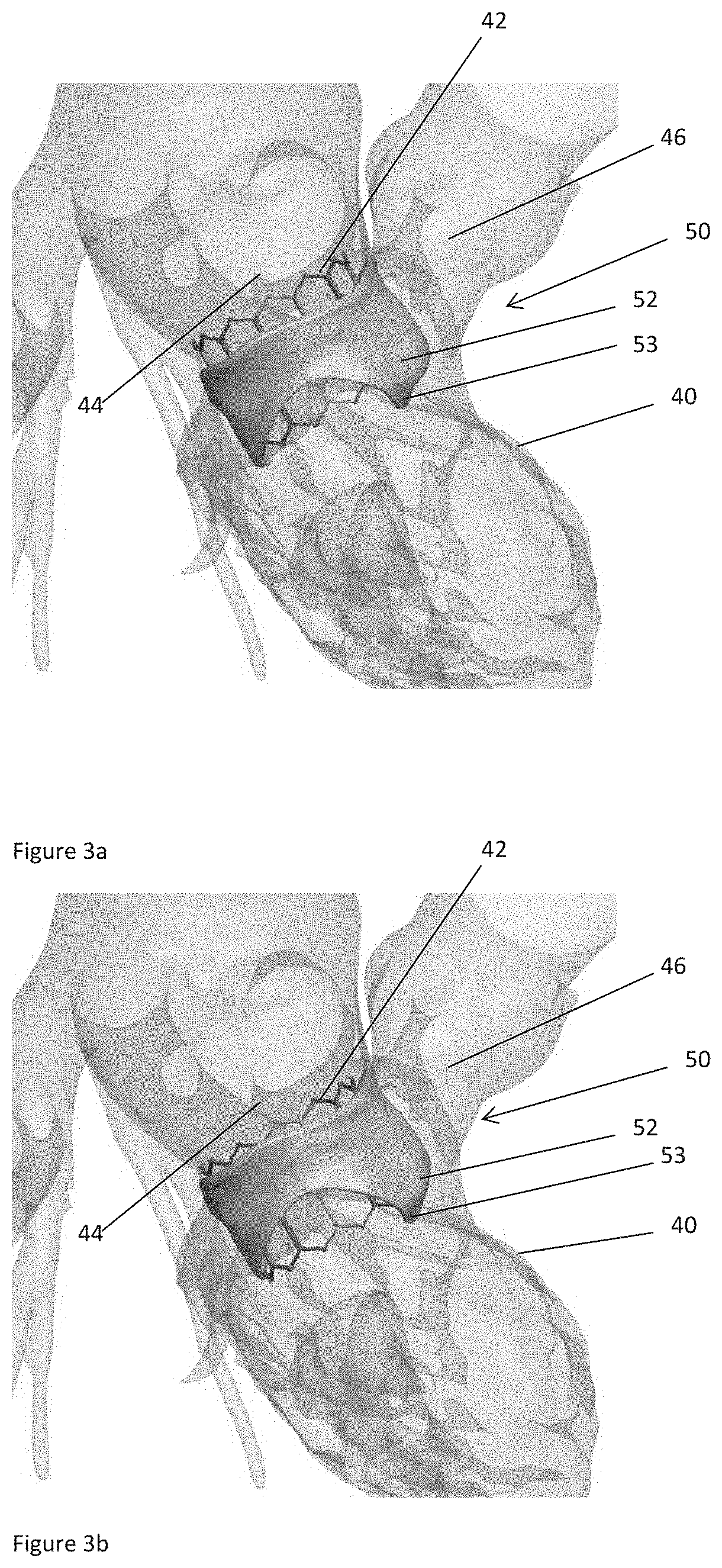Method and System for Determining a Risk of Hemodynamic Compromise After Cardiac Intervention
a risk and cardiac intervention technology, applied in the field of preoperative planning of transcatheter structural heart interventions, can solve the problems of hemodynamic compromise, hemodynamic compromise, obstruction of coronary arteries, etc., and achieve the effect of reliable measurement of obstruction
- Summary
- Abstract
- Description
- Claims
- Application Information
AI Technical Summary
Benefits of technology
Problems solved by technology
Method used
Image
Examples
Embodiment Construction
[0050]Left ventricular outflow tract (LVOT) obstruction after a transcatheter mitral valve replacement (TMVR) procedure is a frequent complication. LVOT obstruction after TMVR in patients with mitral annular calcification may occur in approximately 10% of the patients. This can result in increased mortality after one year. Using the present technology, however, a predictor for the occurrence of LVOT obstruction or other hemodynamic compromise can be given.
[0051]FIG. 1 shows a schematic example of a system 1 for predicting a measure of hemodynamic compromise, such as obstruction of a blood flow path, as a result of transcatheter cardiac valve treatment. The system includes a processing unit 2. The processing unit 2 includes a first receiving unit 4 for receiving a patient-specific anatomical model. Here the patient-specific anatomical model represents a patient-specific cardiac valve region.
[0052]In this example, the patient-specific anatomical model is provided as a three dimensiona...
PUM
 Login to View More
Login to View More Abstract
Description
Claims
Application Information
 Login to View More
Login to View More - R&D
- Intellectual Property
- Life Sciences
- Materials
- Tech Scout
- Unparalleled Data Quality
- Higher Quality Content
- 60% Fewer Hallucinations
Browse by: Latest US Patents, China's latest patents, Technical Efficacy Thesaurus, Application Domain, Technology Topic, Popular Technical Reports.
© 2025 PatSnap. All rights reserved.Legal|Privacy policy|Modern Slavery Act Transparency Statement|Sitemap|About US| Contact US: help@patsnap.com



